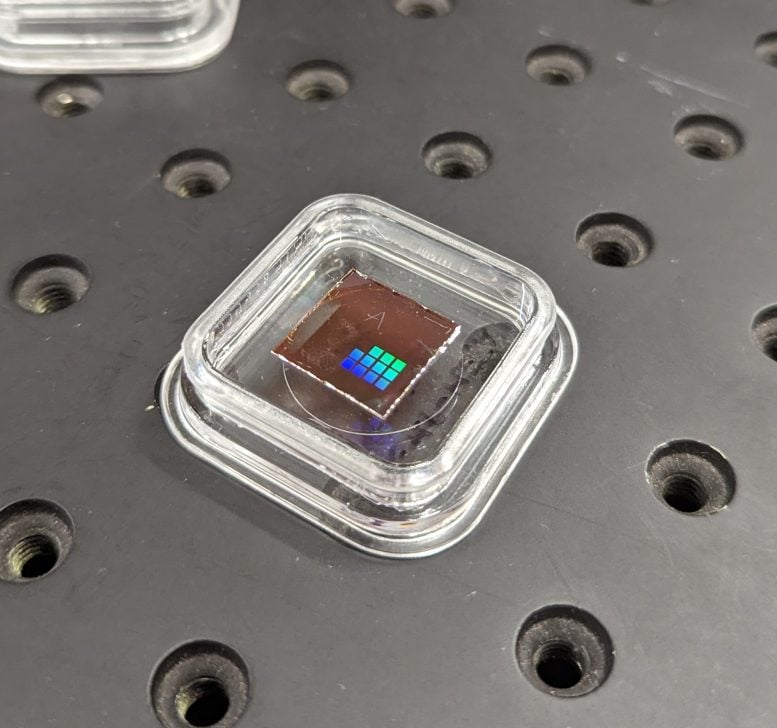Engineers created a compact sensor with infrared imaging for drones, enhancing crop management by allowing for precise irrigation and pest control, which could lower grocery prices and boost harvests.
An international team of engineers has developed a compact and lightweight sensor system with infrared imaging capabilities that can be easily mounted on a drone for remote crop monitoring.
This flat-optics technology has the potential to replace traditional optical lens applications for environmental sensing in a range of industries.
This innovation could result in cheaper groceries as farmers would be able to pinpoint which crops require irrigation, fertilization, and pest control, instead of taking a one-size-fits-all approach, thereby potentially boosting their harvests.
The sensor system can rapidly switch between edge detection – imaging the outline of an object, such as a fruit – and extracting detailed infrared information, without the need for creating large volumes of data and using bulky external processors.

The capability to switch to a detailed infrared image is a new development in the field and could allow farmers to collect more information when the remote sensor identifies areas of potential pest infestations.
This research by engineers at the City University of New York (CUNY), the University of Melbourne, RMIT University and the ARC Centre of Excellence for Transformative Meta-Optical Systems (TMOS) is published in DOI: 10.1038/s41467-024-48783-3
The study was funded by the Australian Research Council.





















Discussion about this post